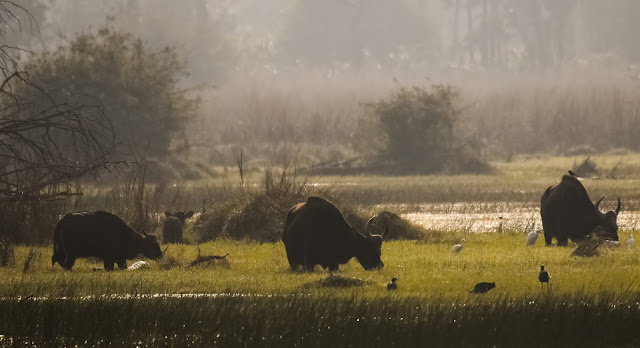Hello readers, thanks a lot for an overwhelming
response, the reason for motivation is just your love which helps me to take my
passion to the highest level. Very soon you will get a unique trip report till the
time you will get yet another topic for the week.
You must be surprised
with “Nakta” this is what Knob billed duck is known in Hindi, sounds
interesting! so without wasting time lets meet Knob Billed Duck.
What's in a name?
Knob billed duck with so many names such as
Nakata, Nandukhi, Hansak, Nakawa, Nakihans, Nakuma, Nasachhina, and Comb Duck. So
many names in a different language but the reason is one. The unique pattern on the head
of the duck defines the name of this bird. Mainly males have a large black knob on
the bill this unique pattern is the main reason for such names. Knob Billed
Duck, a knob on the bill, you can co-relate the same when you see DSLR section. now
we know how it looks like let us know the detailing of the bird in the next
section.
The Fantastic facts
The Knob-billed Duck is an unusual,
pan-tropical duck this common species is unmistakable. Adults have a white head
freckled with dark spots, and a pure white neck and underparts. The upperparts
are glossy blue-black upperparts, with bluish and greenish iridescence
especially prominent on the secondary (lower arm feathers)
The male is larger than the female and has a large black knob on the bill. Young
birds are dull buff below and on the face and neck, with dull brown upperparts,
top of the head and eye stripe. The female is similar but smaller and duller
than male, and she lacks the fleshy knob. Her plumage is less glossy
Immature Knob-billed Ducks look like a large a greyish female of the Cotton Pygmy Goose and may be difficult to tell apart if
no other birds are around to compare size and hue
They
often perch in trees, and are typically seen in flocks. During the wet season,
they form small flocks and in the dry season, up to 100 individuals can be seen
foraging together. Sometimes they separate according to gender
Even
though they are locally common, their numbers are declining. Still, due to
their wide range, this species is not yet considered globally threatened by the
IUCN
Males may have two mates at once or up to five
in succession. They defend the females and young but not the nest sites.
Unmated males perch in trees and wait for opportunities to mate
They
feed on vegetation by grazing or dabbling and to a lesser extent on small fish,
invertebrates, and seeds
The Knob-billed Duck is a good flier. It
performs slow, but steady and noisy wing beats. When they move to
find water, they fly in irregular formation, or in single-file lines, or in
V-formation
I
hope you liked the content to visit DSLR section to enjoy the pictures, these
are taken by me during Bharatpur and Tadoba Visit
A Message of the Day –
God loved the birds and created trees,
humans loved the birds and created cages.
Don’t Cage birds, let them enjoy the sky
BT Wild Art
Deadly DSLR
 |
| Male |
 |
| Female |

























